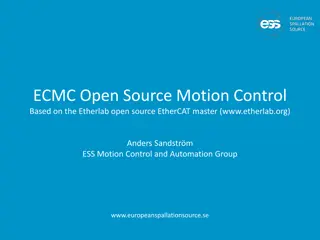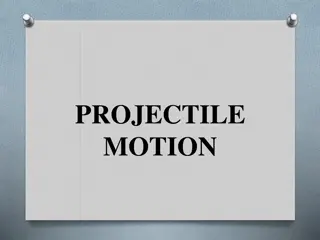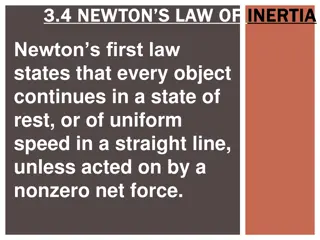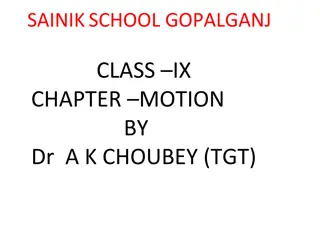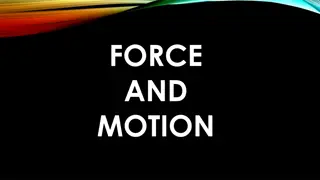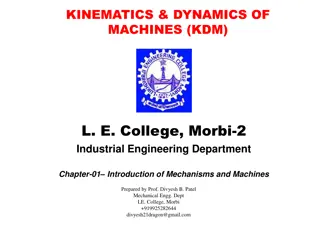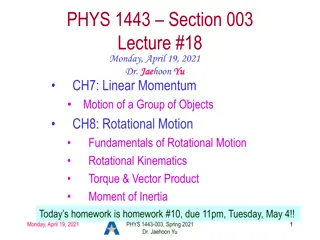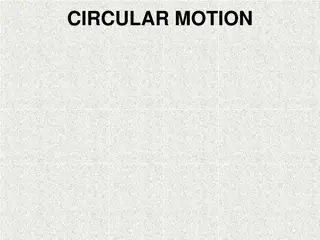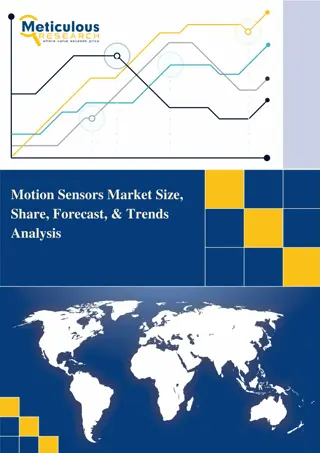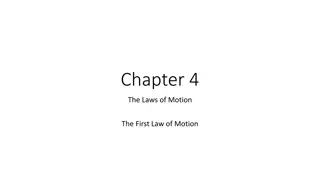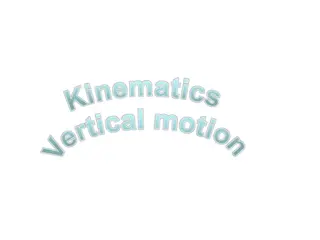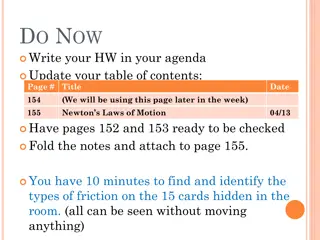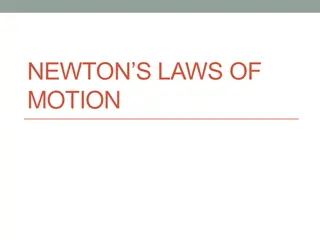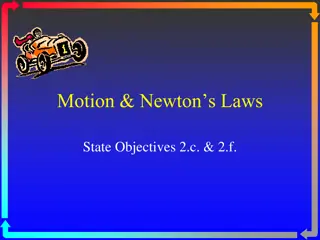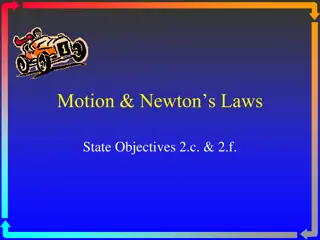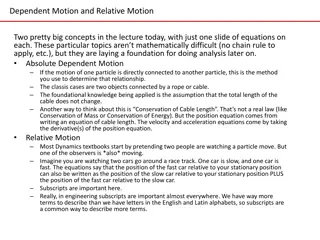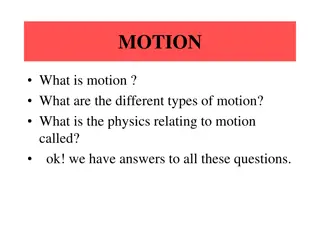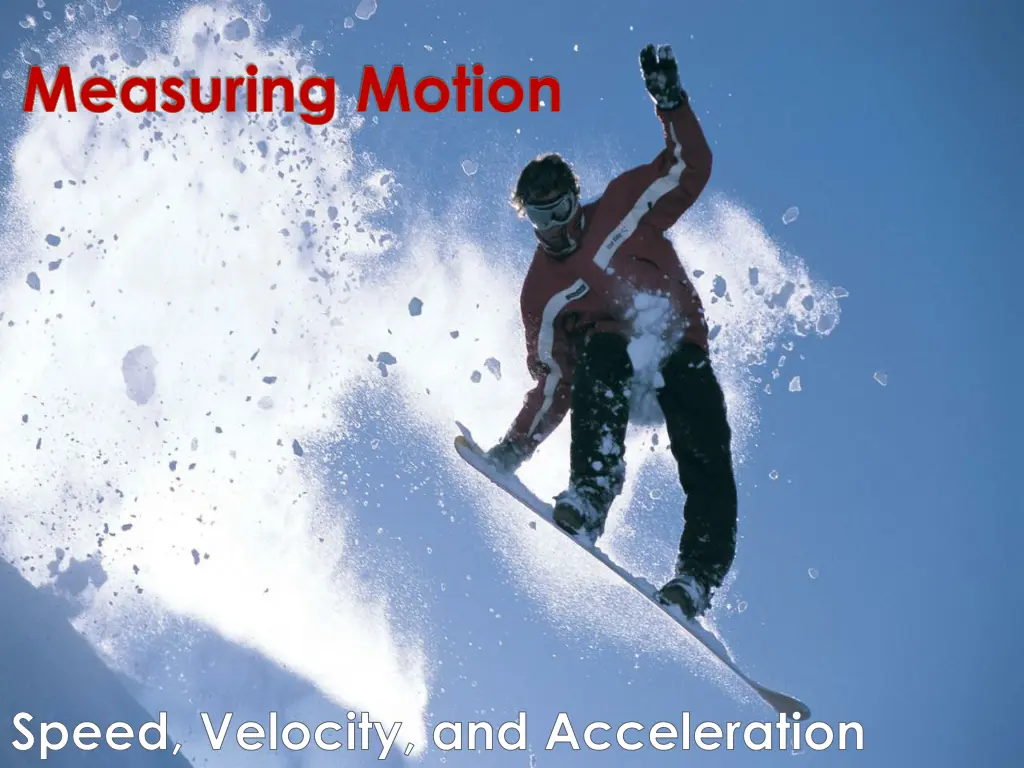
Understanding Motion Concepts for Physics Study
Dive into the fundamentals of motion including speed, velocity, and acceleration. Learn how to distinguish between distance and displacement, calculate speed, and interpret speed vs. time graphs effectively.
Download Presentation

Please find below an Image/Link to download the presentation.
The content on the website is provided AS IS for your information and personal use only. It may not be sold, licensed, or shared on other websites without obtaining consent from the author. If you encounter any issues during the download, it is possible that the publisher has removed the file from their server.
You are allowed to download the files provided on this website for personal or commercial use, subject to the condition that they are used lawfully. All files are the property of their respective owners.
The content on the website is provided AS IS for your information and personal use only. It may not be sold, licensed, or shared on other websites without obtaining consent from the author.
E N D
Presentation Transcript
Measuring Motion Speed, Velocity, and Acceleration
Learning Targets 1: I can explain how to determine if an object is in motion. 2: I can differentiate between distance and displacement. 3: I can differentiate between speed and velocity. 4: I am able to manipulate and use speed and velocity formulas to solve problems. 5: I can define acceleration. 6: I can use and manipulate the formula for acceleration to solve problems.
What is Motion? Change in position in relation to a reference point or stationary object
Distance vs. Displacement Distance follows the actual path Displacement is always a straight line http://maps.google.com/maps?hl=en&q =Xenia&bav=on.2,or.r_gc.r_pw.r_qf.&bv m=bv.43148975,d.aWM&biw=1366&bih= 622&wrapid=tlif136235527620010&um=1 &ie=UTF- 8&sa=X&ei=TuQzUf6yD8vryAGCm4CYAQ &ved=0CAgQ_AUoAg
Speed Speed is the distance traveled divided by the time interval during which the motion occurred Normally, objects do not travel at a constant speed Average Speed - total distance total time D S T
Speed Units Will always be a distance unit / a time unit Ex. Cars: mi./h Jets: km/h Snails: cm/s Falling objects: m/s
Calculating Speed What is the speed of a car that travels 30 miles in 2 hours? 15 mi/hr. How long will it take a car to go 220 miles traveling 55 mph? 4 hours If a car is traveling at 35 m/hr for 6 hours, how far will it travel? 210 miles D S T
Graphing Speed: Distance vs. Time Graphs Denver Phoenix
Graphing Speed: Distance vs. Time Graphs Speed = Slope = Rise/Run Rise
Different Slopes 8 7 Slope = Rise/Run = 0 km/1 hr = 0 km/hr 6 Distance (km) 5 Rise = 2 km 4 Run = 1 hr Rise = 0 km 3 Run = 1 hr 2 Slope = Rise/Run = 2 km/1 hr = 2 km/hr Rise = 1 km 1 Run = 1 hr 0 Slope = Rise/Run = 1 km/1 hr = 1 km/hr 1 2 3 4 5 6 7 Time (hr)
Velocity Velocity is the speed of an object in a particular direction Imagine two bicyclers leave the same building at the same time. The both cycle at 10km/hr for 5 minutes. Why don t they end up at the same place?
Calculating Velocity Same as speed, but also includes direction Example: A plane travels south at 540 miles/hour. Johnny walks 1 block/ minute towards the school D V T
Resultant Velocity The combination of two different velocities acting at the same time + = 15 m/s 1 m/s 16 m/s - = 14 m/s 15 m/s 1 m/s
Acceleration Acceleration is the rate at which velocity changes over time An object accelerates if its speed, direction, or both change Unit: m/s2 Average acceleration = final velocity starting velocity time it takes to change velocity V a T
Acceleration and Velocity As velocity increases, so does acceleration As velocity decreases, so does acceleration When direction changes, so does acceleration When there is a constant velocity, there is no acceleration Increasing velocity - positive acceleration Decreasing velocity - negative acceleration- deceleration
Calculating Acceleration: Example A roller coaster s velocity at the top of a hill is 10m/s. Two sec later it reaches the bottom of the hill with a velocity of 26 m/s. What is the acceleration of the roller coaster? Vf-Vo T 26-10 2 8 m/s/s T a V
Velocity vs. Time Graph Slope is the acceleration. A straight line is constant acceleration 14 12 10 Speed (m/s) 8 6 4 2 0 0 1 2 3 4 5 6 Time (s)

